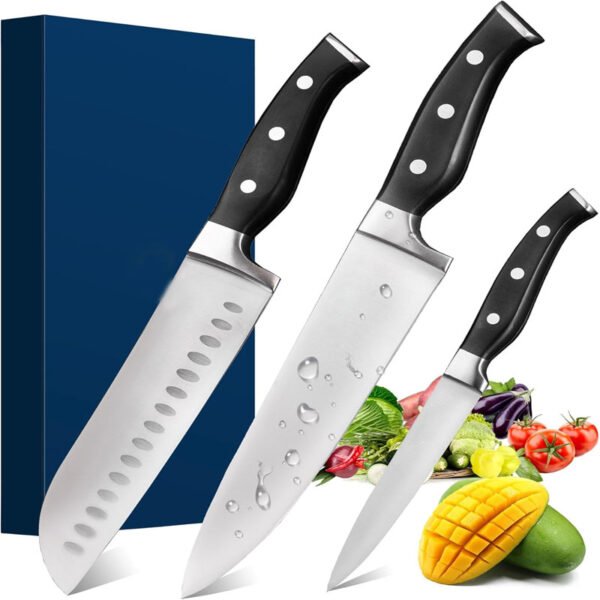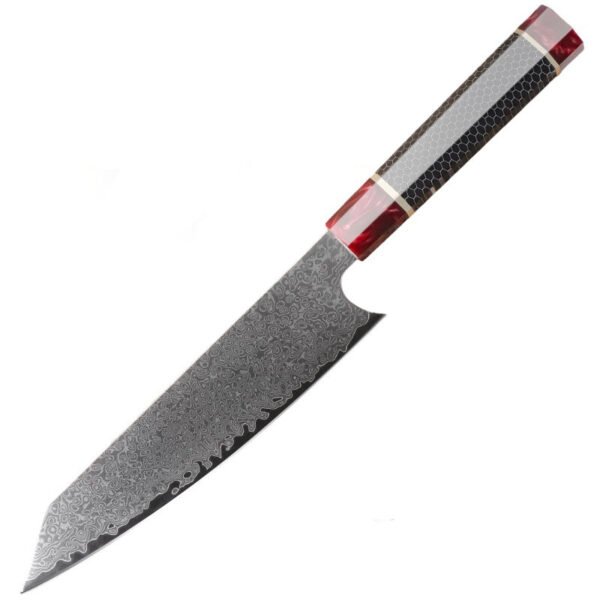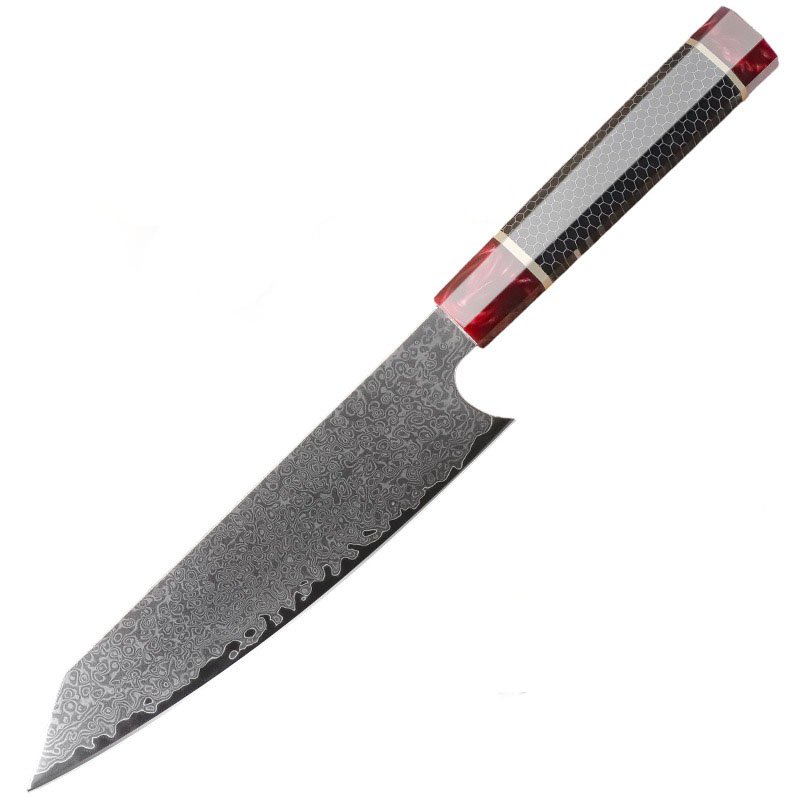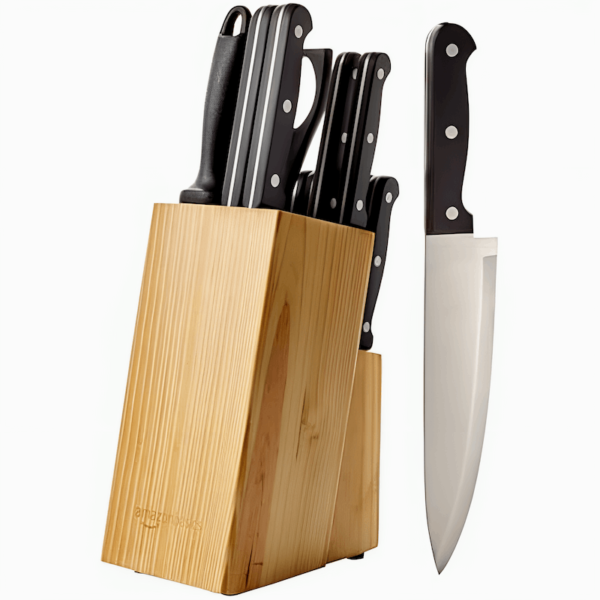A kitchen knife is more than just a handle and a blade. While it might seem simple at first glance, there are actually several important components that contribute to its functionality.
Each part plays a specific role, making the knife versatile for different culinary tasks. These include the butt, tang, handle, bolster, heel, edge, spine, tip, and point.
In this guide, we’ll break down these parts and explain how they impact your knife’s performance.
Keep in mind that not all knives feature every part listed. For instance, some knives don’t have a bolster, and certain elements, like the tang, can vary in design — either full or half.
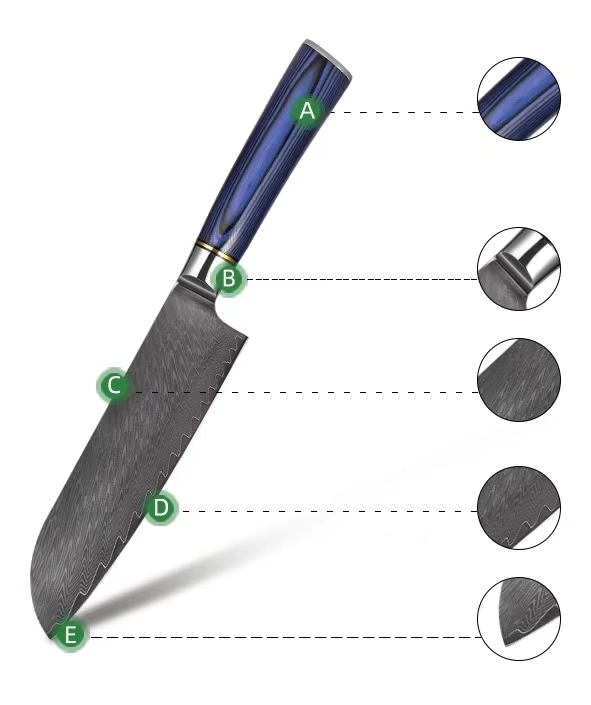
E point
It’s common to confuse the point and the tip of a knife. The point is where the spine meets the edge, forming a sharp spot designed for piercing. While it’s not meant for cutting, the point is perfect for making slits and precise incisions.
D point
So far, we’ve discussed the essential parts of a knife. Now it’s time to explore the more intricate but equally important details. The edge is where the knife does the cutting and pushes ingredients aside. While it may seem straightforward, there’s more to it — different types of knife edges can significantly influence how the knife performs.
C point
The spine is the blunt, back side of the blade that extends from the handle to the point. It provides a surface for cooks to apply extra pressure when cutting tough ingredients or handling tasks that need more force, such as breaking through joints. The spine can also reveal key details about a knife, such as whether it’s forged or stamped.
B point
The top, thicker portion of the blade, which adds weight and strength
A point
The very end of the knife, which is used for piercing

